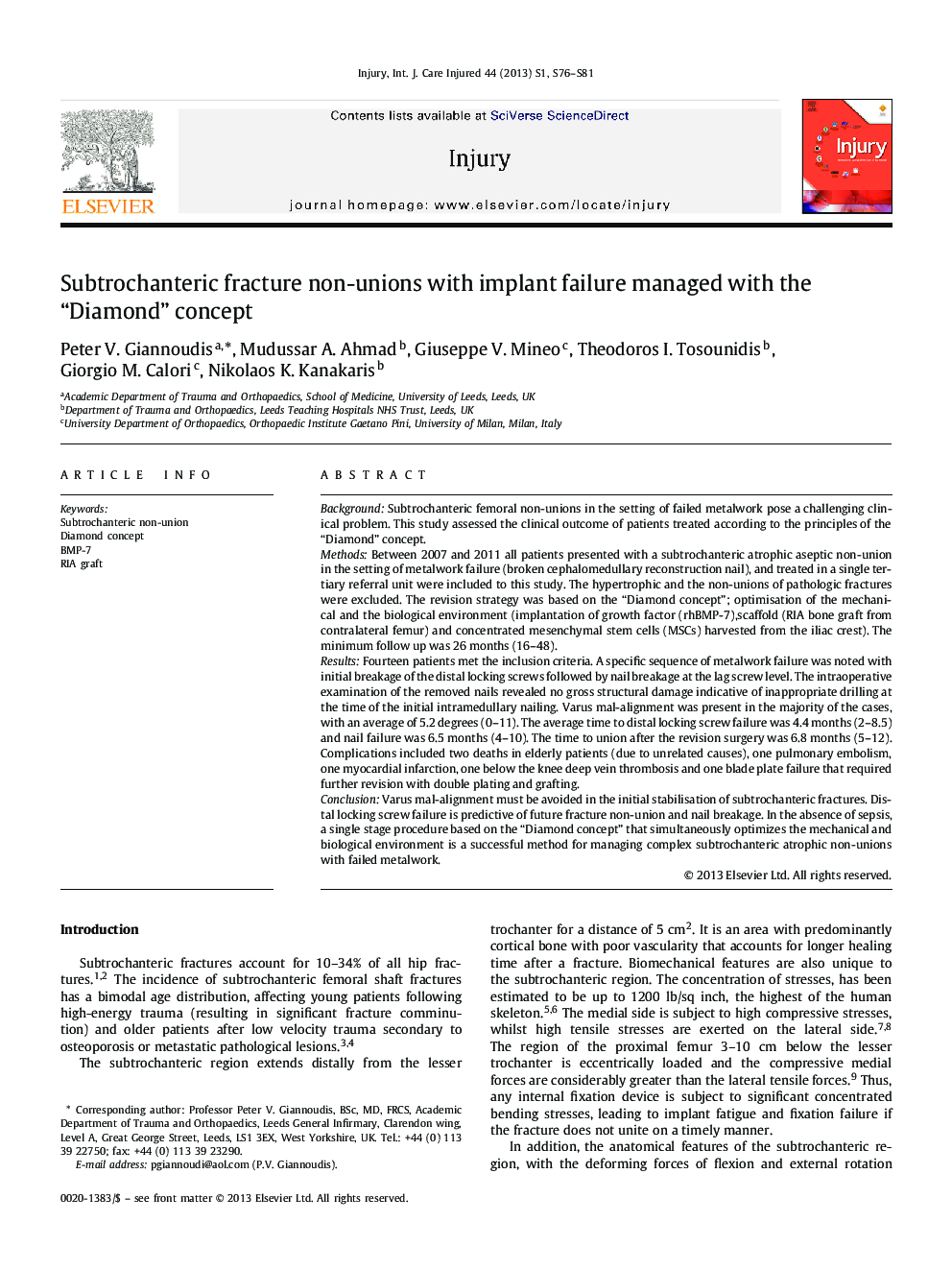| Article ID | Journal | Published Year | Pages | File Type |
|---|---|---|---|---|
| 3240229 | Injury | 2013 | 6 Pages |
BackgroundSubtrochanteric femoral non-unions in the setting of failed metalwork pose a challenging clinical problem. This study assessed the clinical outcome of patients treated according to the principles of the “Diamond” concept.MethodsBetween 2007 and 2011 all patients presented with a subtrochanteric atrophic aseptic non-union in the setting of metalwork failure (broken cephalomedullary reconstruction nail), and treated in a single tertiary referral unit were included to this study. The hypertrophic and the non-unions of pathologic fractures were excluded. The revision strategy was based on the “Diamond concept”; optimisation of the mechanical and the biological environment (implantation of growth factor (rhBMP-7), scaffold (RIA bone graft from contralateral femur) and concentrated mesenchymal stem cells (MSCs) harvested from the iliac crest). The minimum follow up was 26 months (16–48).ResultsFourteen patients met the inclusion criteria. A specific sequence of metalwork failure was noted with initial breakage of the distal locking screws followed by nail breakage at the lag screw level. The intraoperative examination of the removed nails revealed no gross structural damage indicative of inappropriate drilling at the time of the initial intramedullary nailing. Varus mal-alignment was present in the majority of the cases, with an average of 5.2 degrees (0–11). The average time to distal locking screw failure was 4.4 months (2–8.5) and nail failure was 6.5 months (4–10). The time to union after the revision surgery was 6.8 months (5–12). Complications included two deaths in elderly patients (due to unrelated causes), one pulmonary embolism, one myocardial infarction, one below the knee deep vein thrombosis and one blade plate failure that required further revision with double plating and grafting.ConclusionVarus mal-alignment must be avoided in the initial stabilisation of subtrochanteric fractures. Distal locking screw failure is predictive of future fracture non-union and nail breakage. In the absence of sepsis, a single stage procedure based on the “Diamond concept” that simultaneously optimizes the mechanical and biological environment is a successful method for managing complex subtrochanteric atrophic non-unions with failed metalwork.
